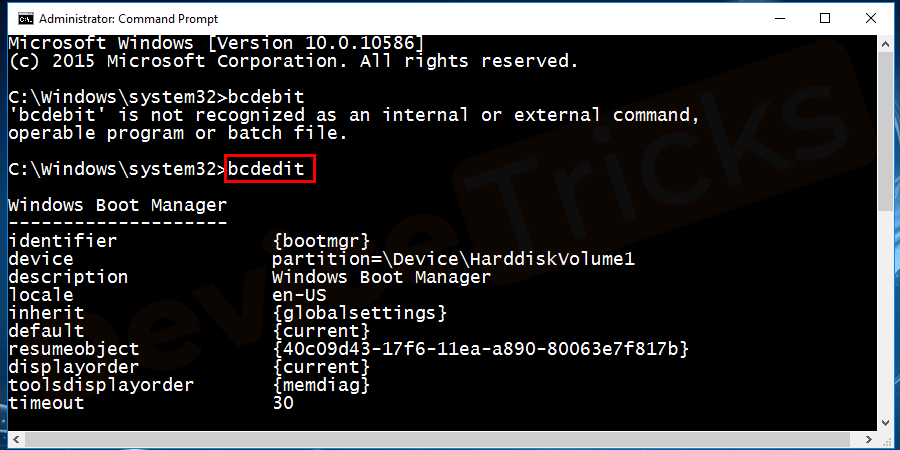

You can then create a DVD or USB install disc that you can use to boot your own PC. If you don’t have an installation disc, you’ll have to use another PC to download a copy of Windows.
#Command prompt windows 10 boot repair how to
If your PC doesn’t have a recovery partition-or you’re just not sure how to access it-you can also start your PC using a DVD or USB with the Windows installer on it. How you do that varies with what brand of PC you own, but you’ll often see a message during startup telling you what key to press to start recovery and repair. It’s possible that your PC has a special recovery partition that will allow you to start the Windows Recovery Environment without needing a physical disc. The first thing you’ll need to do is start your PC into the Windows Recovery Environment. RELATED: How to Use Safe Mode to Fix Your Windows PC (and When You Should) Boot From the Windows Installation Media or Recovery Partition Performing a System Restore would be a good place to start. Instead, you should try starting the PC in Safe Mode and troubleshooting from there. Note: If your PC starts to load Windows, but then fails, then the bootloader is not the problem. If you are seeing any of these messages, it means you won’t be able to start Windows and will have to use the Windows Recovery Environment to do your troubleshooting. FATAL: No bootable medium found! System halted.You’ll usually see error messages like the following: When the boot loader process fails, it will happen after you see the BIOS information but before Windows actually begins to load. The boot sector can experience the same types of problems as any other part of your hard drive-missing files, corrupted files, and even physical damage. It’s this boot strapping process that allows the initial bits of the Windows code to start loading. The master boot code scans the partition table, determines the active partition, loads a copy of the boot sector into the PC’s RAM, and hands off the startup process to that code. The BIOS then loads the master boot code into the PC’s RAM and hands off the startup processes to it. When a PC starts, the initial power-on routine is handled by the BIOS. The boot sector also hosts the Master Boot Record (MBR), which contains the disk signature, partition table for the disk, and a small bit of code called the master boot code. The boot sector contains some code and data that helps BIOS hand off control of the startup process to Windows. The boot sector is a small section at the beginning of a hard drive that gets created whenever you format the drive. RELATED: What's the Difference Between GPT and MBR When Partitioning a Drive? What Are the Boot Sector and Master Boot Record?


 0 kommentar(er)
0 kommentar(er)
